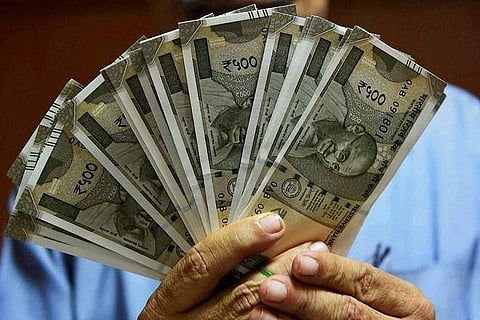

NEW DELHI: As the Supreme Court validates the government’s decision to demonetize Rs 500 and Rs 1,000 notes in 2016, the Reserve Bank of India (RBI) data shows currency in circulation has almost doubled in the six years since demonetization.
Just ahead of the demonetization, currency in circulation was valued at Rs 17 lakh crore. As on December 23, 2022, the currency in circulation stood at Rs 32.4 lakh crore, according to the RBI data.
In a bid to put a halt on black money circulation and promote digital payments, Prime Minister Narendra Modi in November 2016 had banned old Rs 500 and Rs 1,000 currency notes. It may be recalled that the currency in circulation (CIC) had plummeted massively to Rs 9 lakh crore following demonetization on January 6 in 2017. This was a 50% decline from Rs 17 lakh crore as recorded on November 4, 2016.
Use of cash remain high
It remains a mystery, though, why use of cash is still high in the economy despite digital payments going through the roof and measures to discourage the use of cash.
When asked the same question, Deputy RBI governor T Rabi Shankar in one of the post-monetary policy press briefings had said that cash continues to be a major instrument for very small transactions of below Rs 500.
“There is also a store of value demand for currencies,” the deputy governor reasoned.
Lekha Chakraborty, professor of economics, National Institute of Public Finance and Policy (NIPFP), attributes the high digital divide in the country to the high use of cash in the economy.
“The behavioural change to switch onto cashless payments also takes time as many transactions still insist on ‘cash’ and not digital payments. The digital divide in India is a matter of concern, and strengthening digital infrastructure as prelude to digitised currency is so crucial,” says Chakraborty.
The currency in circulation to GDP ratio at the time of Demonetisation was around 11.5%, which fell 8.67% by the end of March 2017 due to demonetisation. However, since then it has steadily gone up, even touching 14.4% in 2020-21, when cash in circulation (CIC) increased by Rs 4 lakh crore.
Though, the growth in circulation of currency has slowed down with only Rs 2.8 lakh crore added in 2021-22. By the end of 2021-22, the cash in circulation was 13.27%.
What is more astonishing is the fact that digital payments since demonetisation have jumped multiple times. From a mere Rs 100 crore worth of monthly transactions in October 2016, monthly UPI transactions in December 2022 had reached Rs 11.90 lakh crore.
Vivek Kumar, an economist with research firm QuantEco, tries to explain the ‘anomaly’. He says that the cash in circulation rose sharply in 2020-21 because of the lockdown as people withdrew money as a precautionary measure.
“The CIC/GDP ratio also increased in 2020-21 because the GDP contracted during the year. However, ever since the situation is getting back to normal and the cash/GDP ratio is coming off,” explains Vivek Kumar. Currently, it stands at 12.2% compared to its peak of 14.5% in Q3 FY21.
He says that 11-12% has been the normal range for cash/GDP ratio in India, and it may take another couple of years of growth in UPI payments to have any meaningful impact on the cash economy.
The Supreme Court on Monday upheld the Centre’s decision to demonetize 86% of the country’s cash in circulation. It said the decision was taken in consultation with the RBI and followed the proper decision-making process.
Subhash Chandra Garg, former economic affairs secretary said, “The judgement today has upheld the legality and constitutionality of the demonetisation. However, its economic, social and security impact were quite different. There was no reduction in black money, corruption or cash though there was a good impact on control of fake currency and terrorist activity for some time.”
When contacted, Sanjeev Sanyal, member, Prime Minister’s Economic Advisory Council, refused to make any comment on the court’s verdict.